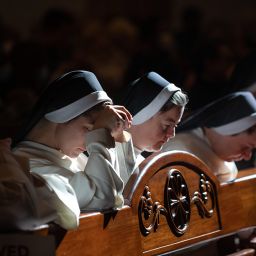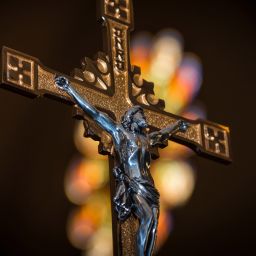By Father John Bayer
Special to The Texas Catholic
I read a wonderful book recently that I think lots of people should read, especially science-minded people: Vestige of Eden, Image of Eternity by Daniel Toma. Dr. Toma is a geneticist at Minnesota State University, as well as a wide reader of Catholic theology from both the eastern and western traditions.
This book is enjoyable for being so synthetic, and for its readability despite being so clearly rooted in many great works of science, philosophy and theology. Toma says he writes for “the modern person of all stripes who is not acquainted with premodern thought, as well as the educated nonspecialist who is interested in a broad range of topics” (xi). In a culture like our own, which is so fraught with intellectual fragmentation and arcane specialists unable to articulate a vision for reality as a whole, this is an important book.
Toma advances a beautiful thesis: it is possible to integrate every genuinely scientific observation into a worldview that is eminently reasonable and highly suggestive of the Catholic vision of God and all reality. In this way, he shows how ideologies like “materialism” (or the denial of spiritual realities) and “scientism” (or the claim that the natural sciences are the only source of truth and that reality is totally mechanical and purposeless) are the result of a dubious choice rather than anything genuinely scientific.
Here I’d like to try to relate just one aspect of his thesis.
Toma outlines the basic story we have from contemporary science about the fascinating 13.7-billion-year journey of matter from subatomic particles to human beings. He expertly summarizes a lot of astronomy, physics, chemistry and biology. Then he shows how this story can easily be integrated into a broader story of ascent, which he calls “the hierarchy of being” – thus taking a phrase from the philosophical tradition, which recognizes that the story of cosmic evolution is not merely the rearrangement of matter into more quantitatively and structurally “complex” items. The story is not just about how an element formed later, like iron, has numerically more protons than an element formed earlier, like hydrogen, or that living things like bacteria have more “complexly” arranged parts than atoms. This story is true, but it does not express all that exists to be observed. There is also an increase in being, which can be expressed along a spectrum of interiority. An atom, for example, has a certain interiority at least insofar as it is in some way possible to identify its unity and thereby distinguish between its ‘inside’ and ‘outside’ or identify what belongs to it as opposed to its environment. However, an atom, just like every non-living thing, does not move itself: it is a unit, but it is a unit that is always knocked about by something outside itself. It is, therefore, less interior than what not only has an interior but is also able to move itself from within that interior. This is one way to express what “is more” in living over non-living things: the living thing is what has such deep interiority that it can move itself.
Living things too can be stratified according to their relative interiority. A plant has more interiority than an atom, but it has less than an animal. For a plant has enough interiority to grow and reproduce, and so its existence suggests the great cosmic story involves a rise in perfection (growth) and generosity (serving new life); but a plant does not have enough interiority to know. Its interior motion finishes entirely outside itself – in its fruit. This point might be more subtle, but Toma explains that higher order plants can indeed move in response to stimuli (like heliotropic plants following the sun), but they cannot, properly speaking, sense or know themselves or other objects. An animal, on the other hand, clearly has enough interiority to sense itself and others. A gazelle cannot know what a lion essentially is, but it can nonetheless recognize the lion as a thing different from itself, and as a thing to be feared. There is a further increase in interiority in that one very special animal – the human being – that not only senses a thing but also knows what the thing essentially is. Unlike the gazelle, the human can understand what the lion is (as opposed to sensing it as a vague “thing” with an associated emotional response).
What’s the take-away? Lots could be said, but the main point, if I understand Toma, is this: the universe is not dumbly there. Something marvelous is happening. The universe is moving. It is leading to a creature whose powers enable it to unite all creation in interior knowledge in order to offer it in loving friendship to the Creator. The structure of the universe leads to worship. We can arbitrarily reject this fact and assert against all evidence that we are an irrational coincidence. Or we can accept what is plain to see and ask why it is the case and what it is that we must now do – and what else God has done – in order to fulfill our magnificent role in God’s great design.
Father John Bayer, O. Cist., is a monk at the Cistercian Abbey of Our Lady of Dallas in Irving.















